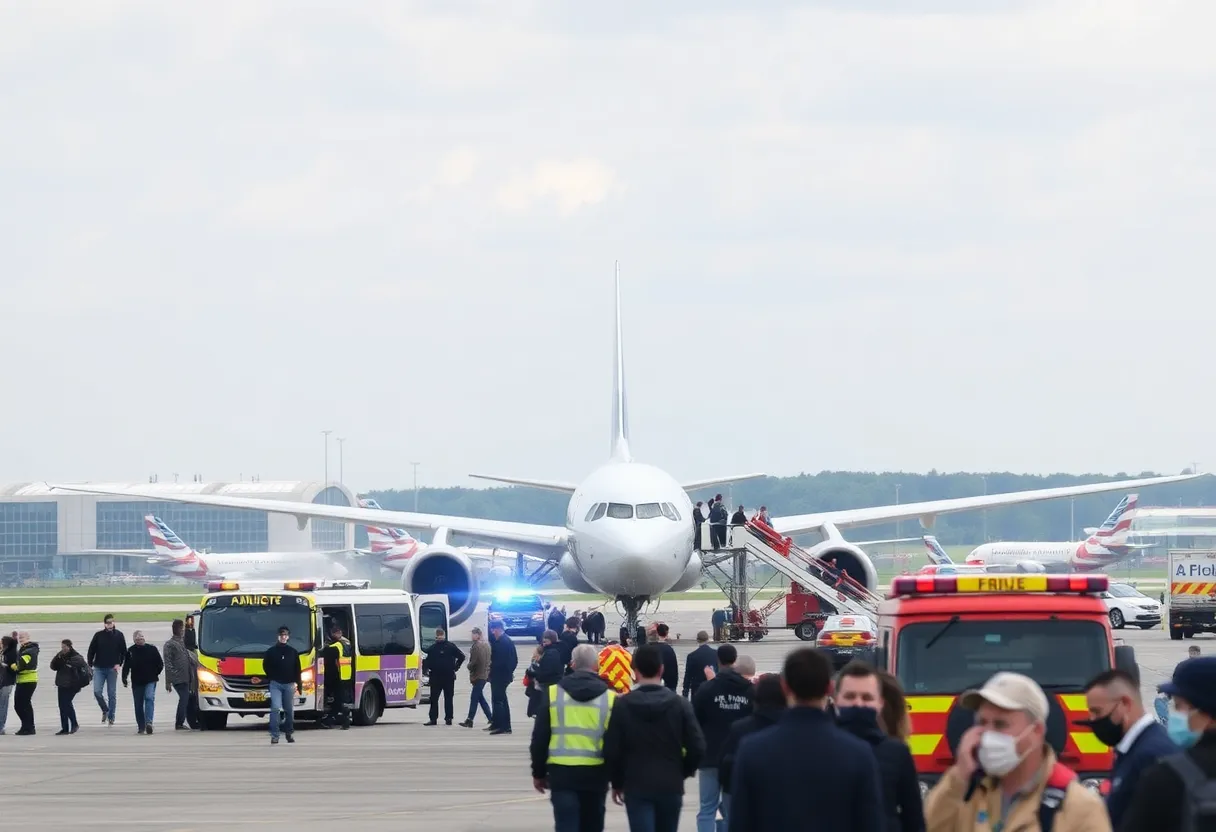Omaha, October 22, 2025
An American Airlines flight departing from Eppley Airport had to make an emergency landing shortly after takeoff due to a communication failure between the cockpit and cabin crew. Passengers on board reported unusual banging on the cockpit door, raising security concerns, but no injuries were reported. The situation was managed effectively, and the flight landed safely, underscoring the importance of aviation safety protocols. This incident highlights the ongoing challenges airlines face with technological reliability and passenger confidence.
Omaha Emergency: American Airlines Flight Makes Urgent Landing Due to Communication Failure
Omaha – An American Airlines flight departing from Eppley Airport experienced a serious issue recently, leading to an emergency landing just 18 minutes after takeoff. The incident involved a communication failure between the cockpit and the cabin crew, which prompted the pilots to prioritize safety and return to the airport.
The most critical detail is that the flight, identified as American Airlines Flight 6469, took off from Omaha but had to land emergently due to this technical problem. Passengers on board noticed unusual banging on the cockpit door, which briefly raised security concerns among those on the plane. However, authorities quickly determined that the banging was related to the crew’s attempts to resolve the communication issue, and no security threat was confirmed.
Fortunately, the situation was handled without any injuries. The aircraft landed safely back at Eppley Airport, and all passengers were able to disembark normally. This outcome highlights the effectiveness of aviation safety protocols in preventing potential risks during flights.
In terms of the broader impact, such incidents can affect airline operations and passenger confidence. For American Airlines, this event adds to ongoing discussions about maintaining reliable onboard systems, as communication failures can disrupt schedules and lead to delays. The airline’s response included thorough checks on the aircraft to identify and fix the problem, ensuring it could return to service quickly.
Supporting details reveal that the communication failure involved the inter-phone system, which is essential for coordination between the cockpit and cabin crew. This system helps in relaying important information during flights, and its malfunction created confusion. Passengers reported hearing the banging, which added to the tension, but crew members acted promptly to manage the situation.
From a business perspective, this incident underscores the challenges airlines face in maintaining technological reliability. Aviation companies invest heavily in communication systems to avoid such disruptions, as they can result in financial costs from delayed flights and potential reputational damage. In recent years, similar technical issues have prompted airlines to review and upgrade their equipment to enhance safety and efficiency.
Background context on aviation safety shows that emergency landings due to technical failures are rare but occur occasionally. These events often lead to investigations by regulatory bodies to ensure compliance with safety standards. For instance, communication systems are a key focus because they play a vital role in emergency responses. The Federal Aviation Administration typically reviews such incidents to identify any patterns and recommend improvements. This particular event in Omaha serves as a reminder of the importance of robust systems in the aviation industry, which is a critical sector for business travel and global commerce.
While the incident did not result in major disruptions beyond the flight itself, it highlights how quickly technical issues can escalate. Airlines like American Airlines operate thousands of flights daily, and maintaining seamless operations is essential for their business model. Passengers affected by this event were rebooked on other flights, minimizing broader impacts on travel plans.
In summary, the emergency landing in Omaha was resolved safely, with no injuries reported, demonstrating the effectiveness of crew training and safety measures. This event provides valuable lessons for the aviation sector, emphasizing the need for continuous improvements in technology and protocols to handle unforeseen challenges.
FAQ Section
- What caused the emergency landing of the American Airlines flight from Omaha’s Eppley Airport?
A cockpit communication failure with cabin crew caused the emergency landing of the American Airlines flight from Omaha’s Eppley Airport just 18 minutes after takeoff. - What did passengers experience during the incident?
Passengers heard banging on the door, sparking brief security concerns during the incident on the American Airlines flight from Omaha’s Eppley Airport. - Was anyone injured in the emergency landing?
No injuries were reported in the emergency landing of the American Airlines flight from Omaha’s Eppley Airport. - How was the issue resolved?
The issue was resolved safely in the emergency landing of the American Airlines flight from Omaha’s Eppley Airport.
Key Features Chart
Below is a simple table outlining the key features of the emergency landing incident:
| Feature | Details |
|---|---|
| Flight Origin | Omaha’s Eppley Airport |
| Time After Takeoff | 18 minutes |
| Cause | Cockpit communication failure with cabin crew |
| Passenger Experience | Heard banging on the door, brief security concerns |
| Outcome | Resolved safely with no injuries reported |
Deeper Dive: News & Info About This Topic
HERE Resources
Flight Disruption in Omaha Following False Alarm





